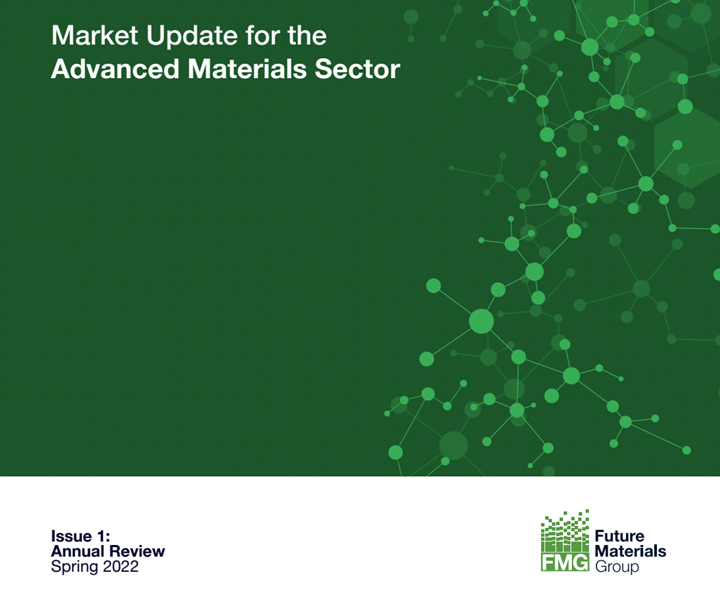FMG releases market analysis on advanced materials
U.K.-based Future Materials Group (FMG) has issued a new report that assesses the outlook for and opportunities in the advanced materials sector.

Advanced materials M&A specialist Future Materials Group (FMG, Cambridge, U.K.) has published “Market Update for the Advanced Materials Sector,” an inaugural report that the firm will issue twice annually.
The update examines market trends and financial metrics within the advanced materials sector, which FMG broadly defines to include materials such as rare metals, metal alloys, foams, nanomaterials, advanced fibers, raw polymers and resins and more.
Following the definition of the sector, the report is divided into two sections. In the first section, Market Dynamics, FMG explores the post-pandemic acceleration in portfolio transformation activity, with analysis focusing on changes in acquisition and divestment activity spurred by the dynamic post-pandemic environment. This includes specific discussion about Ashland (Dublin, Ohio, U.S.), Arkema (King of Prussia, Pa., U.S. and Colombes, France) and Lanxess (Cologne, Germany).
Also in the Market Dynamics section is analysis of the surge in public listings in the additive manufacturing (AM) space. This includes discussion on the role SPACs are playing as companies like Velo3D (Campbell, Calif., U.S.), Xometry (Gaithersburg, Md., U.S.), MarkForged (Cambridge, Mass., U.S.) and Desktop Metal (Burlington, Mass., U.S.) joined stock markets. Data here explore stock performance of incumbent and newly listed AM companies.
The second section, Financial Review, takes a broader look at cost and supply chain challenges that the advanced materials space faces. Other topics here include analysis of post-pandemic valuation multiples, CAPEX levels and private equity activity.
The report is free and available for download here from FMG’s site.
Related Content
-
A new era for ceramic matrix composites
CMC is expanding, with new fiber production in Europe, faster processes and higher temperature materials enabling applications for industry, hypersonics and New Space.
-
TU Munich develops cuboidal conformable tanks using carbon fiber composites for increased hydrogen storage
Flat tank enabling standard platform for BEV and FCEV uses thermoplastic and thermoset composites, overwrapped skeleton design in pursuit of 25% more H2 storage.
-
Sulapac introduces Sulapac Flow 1.7 to replace PLA, ABS and PP in FDM, FGF
Available as filament and granules for extrusion, new wood composite matches properties yet is compostable, eliminates microplastics and reduces carbon footprint.
















